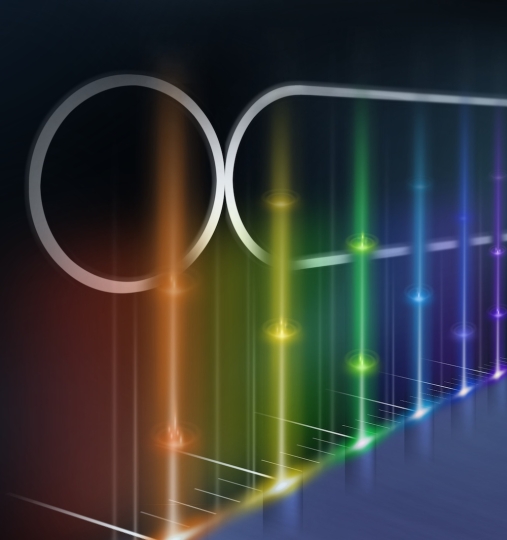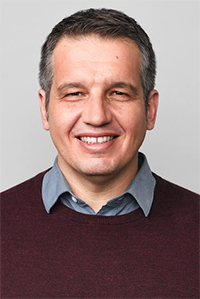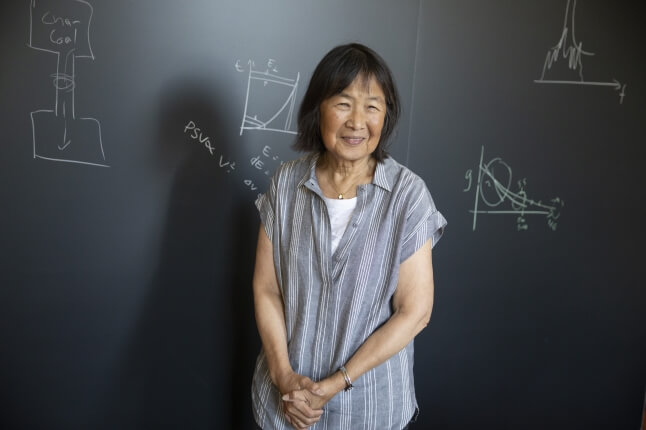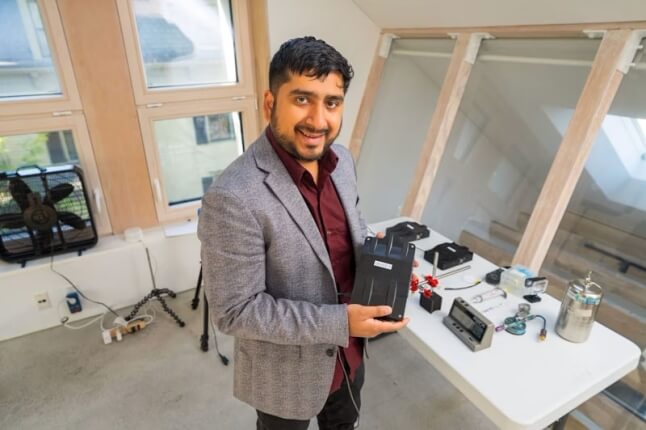News
A new on-chip frequency comb combines a coupled resonator with an electro-optical frequency comb to improve the efficiency of frequency combs and improve the bandwidth. (Credit: Yiqing Pei/Harvard SEAS)
Download ImageOn-chip laser frequency combs — lasers that emit multiple frequencies or colors of light simultaneously separated like the tooth on a comb — are a promising technology for a range of applications including environmental monitoring, optical computing, astronomy, and metrology. However, on-chip frequency combs are still limited by one serious problem — they are not always efficient. There are several ways to mitigate the efficiency problem, but they all suffer from trade-offs. For example, combs can either have high efficiency or broad bandwidth but not both. The inability to design an on-chip laser frequency comb that is both efficient and broad has stymied researchers for years and hindered the widespread commercialization of these devices.
Now, a team from the Harvard John A. Paulson School of Engineering and Applied Sciences (SEAS) has developed an electro-optic frequency comb that is 100-times more efficient and has more than twice the bandwidth of previous state-of-the-art versions.
“Our device paves the way for practical optical frequency comb generators and opens the door for new applications, said Marko Lončar, the Tiantsai Lin Professor of Electrical Engineering at SEAS and senior author of the study. “It also provides a platform to investigate new areas of optical physics.”
The research is published in Nature Photonics.
This advancement builds upon previous research from Lončar and his team.
In 2019, Lončar and his lab demonstrated the first stable, on-chip frequency comb that could be controlled with microwaves. This so-called electro-optical frequency comb, built on the lithium niobate platform pioneered by Lončar’s lab, spanned the entire telecommunications bandwidth but was limited in its efficiency. In 2021, the team developed a coupled resonators device to control the flow of light, and used them to demonstrate on-chip frequency shifters – a device that can change the color of light with nearly 100% efficiency.
The latest research applies the two concepts to address the challenge in resonator based electro-optic frequency combs – efficiency-bandwidth tradeoff.
“We demonstrated that by combining these two approaches — the coupled resonator with the electro-optical frequency comb — we could improve the efficiency a lot without sacrificing bandwidth. In fact, we actually improved bandwidth,” said Yaowen Hu, a research assistant at SEAS and first author of the paper.
“We found that when you improve the performance of the comb source to this level, the device starts operating in an entirely new regime that combines the process of electro-optic frequency comb generation with the more traditional approach of a Kerr frequency comb,” said Mengjie Yu, a former postdoctoral fellow at SEAS and co-first author of the paper.
Yu is currently an Assistant Professor at the University of Southern California.
This new comb can generate ultrafast femtosecond pulses at high power. Together with the high-efficiency and broadband, this device can be useful for applications in astronomy, optical computing, ranging and optical metrology.
The research was co-authored by Brandon Buscaino, Neil Sinclair, Di Zhu, Rebecca Cheng, Amirhassan Shams-Ansari, Linbo Shao, Mian Zhang and Joseph M. Kahn.
It was supported in part by the Air Force Office of Scientific Research under grants FA9550-19-1-0376 and FA9550-19-1-0310; the Defense Advanced Research Projects Agency under grant LUMOS HR0011-20-C-137; NASA under grants 80NSSC21C0583; the Air Force Research Laboratory under grant FA9550-21-1-0056; the National Science Foundation under grant ECCS-1839197; and the Department of Energy under grant DE-SC0020376.
Topics: Applied Physics, Optics / Photonics
Cutting-edge science delivered direct to your inbox.
Join the Harvard SEAS mailing list.
Scientist Profiles
Marko Lončar
Tiantsai Lin Professor of Electrical Engineering
Press Contact
Leah Burrows | 617-496-1351 | lburrows@seas.harvard.edu




